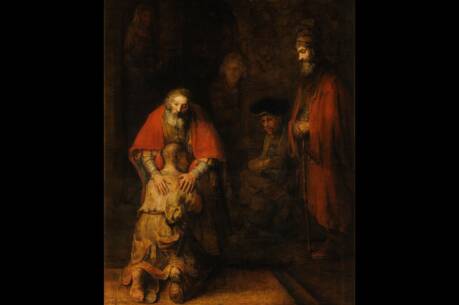How do you encounter God in your daily life?
The first reading from Genesis and the Gospel from Matthew each describe an experience of human encounters with God. Abram (later Abraham) receives a divine calling, and Peter, James and John witness Jesus’ transfiguration. These extraordinary events remind us to look for God’s presence in our lives.
His face shone like the sun and his clothes became white as light (Mt 17:2)
What can you do to increase your faith in God?
Do you seek to encounter God in your daily life?
Are you listening for God's calling?
In the first reading, God calls Abram to be a migrant, commanding him to leave his home and travel to an unknown land. If he fulfills this divine command, Abram is to be blessed with a great nation, and all nations will be blessed through him (Gn 12:2-3). Abram answers this calling, even without knowing what he might encounter along the way. As we journey through Lent, we can take inspiration from Abram’s willingness to follow God’s word and work to live lives that are guided by God.
Most of us will not receive a direct command from God as Abram did, yet each day we experience God in our lives. Abram’s encounter reminds us to look for God in our lives. Moreover, Abram is said to be a blessing for others which reveals the power and influence one person can have on the lives of many.
In the Gospel reading from Matthew, Peter, James and John witness the transfiguration of Jesus. Their shared experience of this event allows them to more fully understand and realize God’s presence in their lives. Matthew presents the transfiguration as a physical and spiritual transformation that communicates Jesus’ significance to his followers and links him to past and future traditions. Physically, Jesus’ face “shone like the sun” and his clothes became “white as light” (Mt 17:2). This theophany (a physical manifestation of God) occurs on a mountain and has parallels to traditions about Moses and Elijah, who both encounter God on mountains in the Old Testament. Moses’ face even became radiant when he encountered God when receiving the law (Ex 34:29, 35).
Peter, James and John are clearly stunned by what they witness, as they fall on their faces out of respect and likely genuine fear (Mt 17:6). Together they experience a vision that connects Jesus to the Jewish law and prophets, represented by Moses and Elijah. As we have heard over the past two Sundays, Matthew depicts Jesus as a Jewish teacher and interpreter who came to fulfill the law and prophets, not to abolish them (Mt 5:17). Today Matthew reveals Jesus as the fulfilment of the law and the prophets by depicting him alongside Moses and Elijah during this transformative event.
Just as the transfiguration connects Jesus to the past, it also foreshadows his future glory in the resurrection. When Jesus makes his first resurrection appearance to Mary Magdalene, his clothes are white as snow (Mt 28:3), as they are at the transfiguration. Likewise, Jesus instructs the apostles not to report the transfiguration until after his resurrection, when the event would take on a more significant meaning.
As we continue through Lent, today’s readings allow us to reflect on our encounters with God. Abram’s faithfulness to God can be a model for how we should react when we receive a divine call, and Abram also reminds us of the impact our lives can have on others. Peter, James and John, while stunned by the vision of the transfiguration, remind us to continue to prepare ourselves to encounter Jesus in the resurrection.
This article also appeared in print, under the headline “Encountering God,” in the March 2, 2020, issue.









